Effect of Pressure Regulating Mechanism on Screw Pressing Efficiency and Production Capacity in Sea Buckthorn (Hippophae rhamnoides) Juice Extraction
Abstract
:1. Introduction
2. Materials and Methods
2.1. Sampling
2.2. Description of the Experimental Screw Press
2.3. Determination of Juice Yield During the Pressing Process
- C–juice yield (%);
- A–mass of the product before pressing, kg;
- B–mass of extract after pressing, kg.
2.4. Determination of Vitamins by Method of Capillary Electrophoresis
2.5. Determination of Compression Density of Sea Buckthorn
2.6. Determination of Energy Characteristics and Pressure of Experimental Press Equipment
2.7. Statistics
3. Results and Discussion
3.1. Physico-Chemical Properties of Sea Buckthorn
3.2. Study of Juice Yield During Pressing
3.3. Determination of Compression Density of Sea Buckthorn During Pressing
3.4. Determining the Pressure During Pressing
3.5. Determination of Power in the Pressing Process
3.6. Mathematical Description of Pressure Self-Regulation Mechanism for Press Equipment
- P—pressing pressure, Pa;
- S—area affected by the force, m3.
- ρθ—density of the sample, kg/m3;
- Vθ—volume of sample in the pressing channel, m3.
- k—spring stiffness, N/m;
- —distance at absolute spring deformation, m.
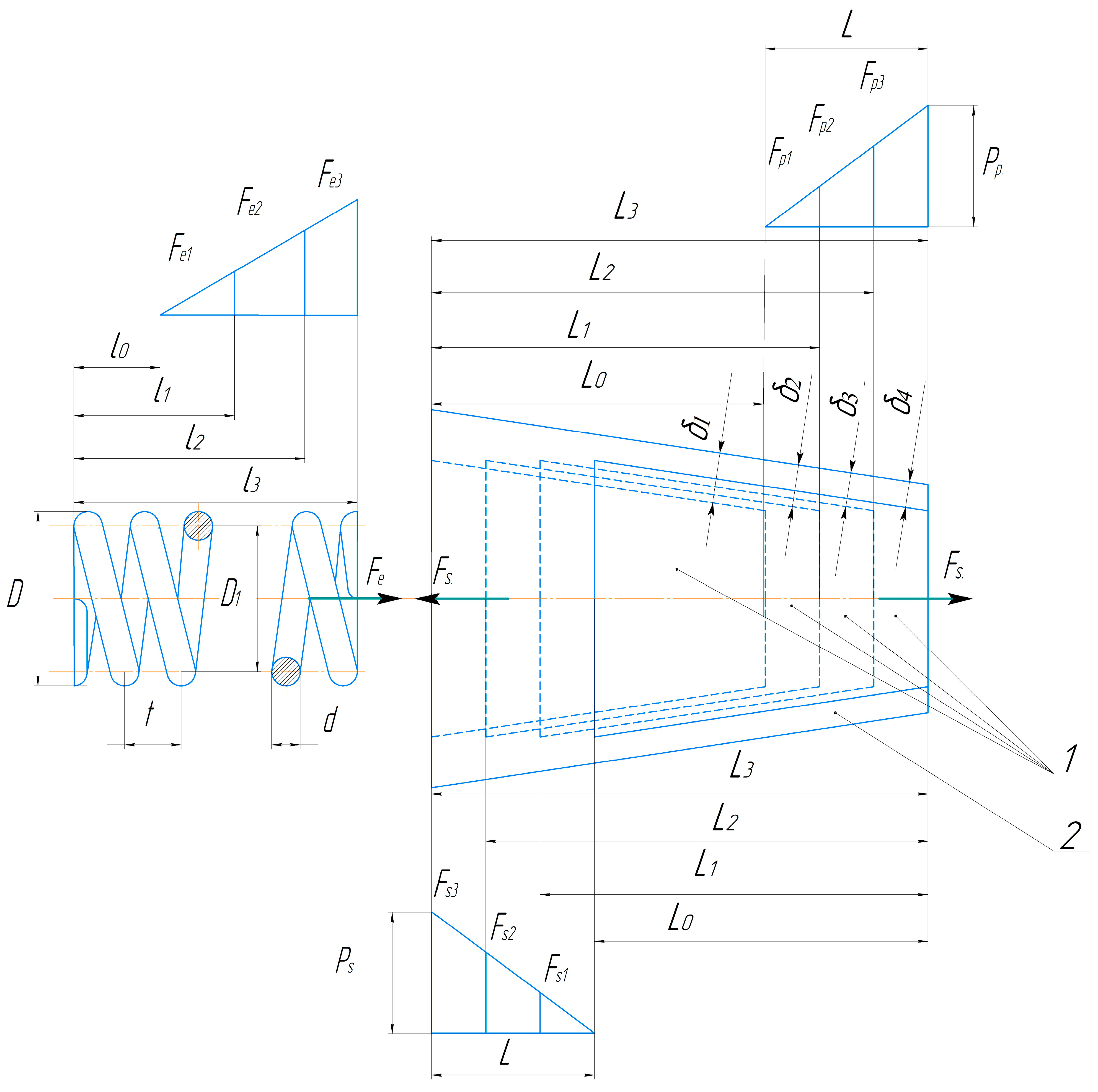
4. Conclusions
Author Contributions
Funding
Institutional Review Board Statement
Informed Consent Statement
Data Availability Statement
Acknowledgments
Conflicts of Interest
References
- Essa, M.; Bishir, M.; Bhat, A.; Chidambaram, S.; Al-Balushi, B.; Hamdan, H.; Govindarajan, N.; Freidland, R.; Qoronfleh, M. Functional foods and their impact on health. J. Food Sci. Technol. 2021, 60, 820–834. [Google Scholar] [CrossRef]
- Wang, K.; Xu, Z.; Liao, X. Bioactive compounds, health benefits and functional food products of sea buckthorn: A review. Crit. Rev. Food Sci. Nutr. 2021, 62, 6761–6782. [Google Scholar] [CrossRef] [PubMed]
- Ma, Q.G.; He, N.X.; Huang, H.L.; Fu, X.M.; Zhang, Z.L.; Shu, J.C.; Wang, Q.Y.; Chen, J.; Wu, G.; Zhu, M.N.; et al. Hippophae rhamnoides L.: A comprehensive review on the botany, traditional uses, phytonutrients, health benefits, quality markers, and applications. J. Agric. Food Chem. 2023, 71, 4769–4788. [Google Scholar] [CrossRef] [PubMed]
- Wang, Z.; Zhao, F.; Wei, P.; Chai, X.; Hou, G.; Meng, Q. Phytochemistry, health benefits, and food applications of sea buckthorn (Hippophae rhamnoides L.): A comprehensive review. Front. Nutr. 2022, 9, 1036295. [Google Scholar] [CrossRef]
- Tokhtarov, Z.; Amirkhanov, K.; Kassenov, A.; MKakimov, M.; Orynbekov, O.; Moldabayeva, Z. Mineral Composition of Sea Buckthorn. Res. J. Pharm. Biol. Chem. Sci. 2016, 7, 1373–1377. [Google Scholar]
- Yu, W.; Du, Y.; Li, S.; Wu, L.; Guo, X.; Qin, W.; Kuang, X.; Gao, X.; Wang, Q.; Kuang, H. Sea buckthorn-Nutritional composition, Bioactivity, Safety, and Applications: A Review. J. Food Compos. Anal. 2024, 133, 106371. [Google Scholar] [CrossRef]
- Raal, A.; Rusalepp, L.; Chiru, T.; Ciobanu, N.; Talvistu, K.; Shusta, M.; Koshovyi, O.; Pussa, T. Polyphenolic Compounds and Antioxidant Activity of Sea Buckthorn (Hippophae rhamnoides L.). Phyton-Int. J. Exp. Bot. 2023, 92, 2965–2979. [Google Scholar] [CrossRef]
- Nnamdi, U.B.; Onyejiuwa, C.T.; Ogbuke, C.R. Review of orange juice extractor machines. Adv. Sci. Technol. Eng. Syst. J. 2020, 5, 485–492. [Google Scholar] [CrossRef]
- Donaldson, M. Household juice extractor comparison and optimization. J. Food Process. Technol. 2020, 11, 14. Available online: https://www.walshmedicalmedia.com/open-access/household-juice-extractor-comparison-and-optimization-53006.html (accessed on 20 June 2024).
- Ayele, H.H.; Latif, S.; Müller, J. Influence of Temperature and Screw Pressing on the Quality of Cassava Leaf Fractions. Agriculture 2022, 12, 42. [Google Scholar] [CrossRef]
- Omoregie, M.J.; Francis-Akilaki, T.I.; Okojie, T.O. Design and fabrication of a juice extractor. J. Appl. Sci. Environ. Manag. 2018, 22, 207–212. [Google Scholar] [CrossRef]
- Bhuiya MM, K.; Rasul, M.; Khan, M.; Ashwath, N.; Mofijur, M. Comparison of oil extraction between screw press and solvent (n-hexane) extraction technique from beauty leaf (Calophyllum inophyllum L.) feedstock. Ind. Crops Prod. 2020, 144, 112024. [Google Scholar] [CrossRef]
- Fantino, V.M.; Bodoira, R.M.; Penci, M.C.; Ribotta, P.D.; Martínez, M.L. Effect of screw-press extraction process parameters on the recovery and quality of pistachio oil. Grasas y Aceites 2020, 71, e360. [Google Scholar] [CrossRef]
- Wu, C.; Ge, F.; Shang, G.; Wang, G.; Zhao, M.; Wu, L.; Guo, H. Design of screw type automatic apple juicer. J. Phys. Conf. Ser. 2021, 1750, 012042. [Google Scholar] [CrossRef]
- Vdovina, T.A. Intraspecific Diversity of Wild-Growing Sea Buckthorn (Hippophae rhamnoides L.) in the East Kazakhstan region and Prospects of Its Introduction. Ph.D. Thesis, Al-Farabi Kazakh National University, Almaty, Kazakhstan, 2010. [Google Scholar]
- Kasenov, A.L.; Kakimov, M.M.; Tokhtarov, J.H. Study of sea buckthorn composition by capillary electrophoresis method. Bull. Altai State Agrar. Univ. 2011, 86, 82–84. [Google Scholar]
- Berestovoy, A.A. Improvement of the Process of Safflower Oil Production on a Single-Screw Press with the Use of Ultrasound. Ph.D. Thesis, Voronezh State University of Engineering Technologies, Voronezh, Russia, 2018. [Google Scholar]
- Abdilova, G.; Sergibayeva, Z.; Orynbekov, D.; Shamenov, M.; Zhumadilova, G.; Bakiyeva, A.; Mukashev, N.; Bayadilova, A.; Dukenbayev, D. Influence of Grinding Degree and Screw Rotation Speed on Sunflower Oil Pressing Process. Appl. Sci. 2023, 13, 9958. [Google Scholar] [CrossRef]
- Gâtlan, A.-M.; Gutt, G. Sea Buckthorn in Plant Based Diets. An Analytical Approach of Sea Buckthorn Fruits Composition: Nutritional Value, Applications, and Health Benefits. Int. J. Environ. Res. Public Health 2021, 18, 8986. [Google Scholar] [CrossRef]
- Tardy, A.-L.; Pouteau, E.; Marquez, D.; Yilmaz, C.; Scholey, A. Vitamins and Minerals for Energy, Fatigue and Cognition: A Narrative Review of the Biochemical and Clinical Evidence. Nutrients 2020, 12, 228. [Google Scholar] [CrossRef] [PubMed]
- Mousavi, S.; Bereswill, S.; Heimesaat, M.M. Immunomodulatory and antimicrobial effects of vitamin C. Eur. J. Microbiol. Immunol. 2019, 9, 73–79. [Google Scholar] [CrossRef] [PubMed]
- Tutelyan, V.A. Methodological recommendations 2.3.1.2432-08 Rational nutrition. In Norms of Physiologic Needs in Energy and Food Substances for Different Groups of Population of the Russian Federation; Federal Center of Hygiene and Epidemiology of Rospotrebnadzor: Moscow, Russia, 2008. [Google Scholar]
- Mursalykova, M.; Kakimov, M.; Kassenov, A.; Iskakov, B.; Sergibayeva, Z.; Kaspakov, E.; Zhumadilova, G.; Shulenova, A.; Kokayeva, G.; Suychinov, A. Mathematical Modeling of Screw Press Configuration for Processing Safflower Oil. Appl. Sci. 2023, 13, 3057. [Google Scholar] [CrossRef]
- Herák, D.; Kabutey, A.; Petrů, M.; Hrabě, P.; Lepšík, P.; Simanjuntak, S. Relaxation behaviour of Jatropha curcas L. bulk seeds under compression loading. Biosyst. Eng. 2014, 125, 17–23. [Google Scholar] [CrossRef]
- Wilczyński, K.; Kobus, Z.; Dziki, D. Effect of Press Construction on Yield and Quality of Apple Juice. Sustainability 2019, 11, 3630. [Google Scholar] [CrossRef]
- Wilczyński, K.; Kobus, Z.; Nadulski, R.; Szmigielski, M. Assessment of the Usefulness of the Twin-Screw Press in Terms of the Pressing Efficiency and Antioxidant Properties of Apple Juice. Processes 2020, 8, 101. [Google Scholar] [CrossRef]
- Kovalyshyn, S.; Tomyuk, V. Research on power consumption of screw press for pressing of oil from rape seed. In BIO Web of Conferences; Szeląg-Sikora, A., Ed.; EDP Sciences: Les Ulis, France, 2018; Volume 10, p. 02011. [Google Scholar] [CrossRef]
- Patent 2021143 Screw Press Stoker for Juice Extraction from Vegetable Raw Materials. Available online: https://www.freepatent.ru/patents/2021143 (accessed on 20 June 2024).
- Patent RU185464U1 Jack Press for Juice Pressing. Available online: https://patents.google.com/patent/RU185464U1/ru (accessed on 20 June 2024).
- Patent RU72819 A Device for Pressing Juice from Fruits. Available online: https://www.fips.ru/cdfi/fips.dll/ru?ty=29&docid=72819&ki=PM (accessed on 20 June 2024).
- Patent CN210617376U Belt-Crushing Double-Screw Squeezer. Available online: https://patents.google.com/patent/CN210617376U (accessed on 21 June 2024).
- Hebbar, H.U.; Sumana, B.; Raghavarao, K.S.M.S. Use of reverse micellar systems for the extraction and purification of bromelain from pineapple wastes. Bioresour. Technol. 2008, 99, 4896–4902. [Google Scholar] [CrossRef] [PubMed]
- Kakimov, M.; Mursalykova, M.; Gajdzik, B.; Wolniak, R.; Kokayeva, G.; Bembenek, M. Optimal Ways of Safflower Oil Production with Improvement of Press Equipment. Foods 2024, 13, 1909. [Google Scholar] [CrossRef]
- GOST 13775-86; Screw Cylindrical Compression Springs of III Class, Category 2. IPK Publishing House of Standards: Moscow, Russia, 1999.
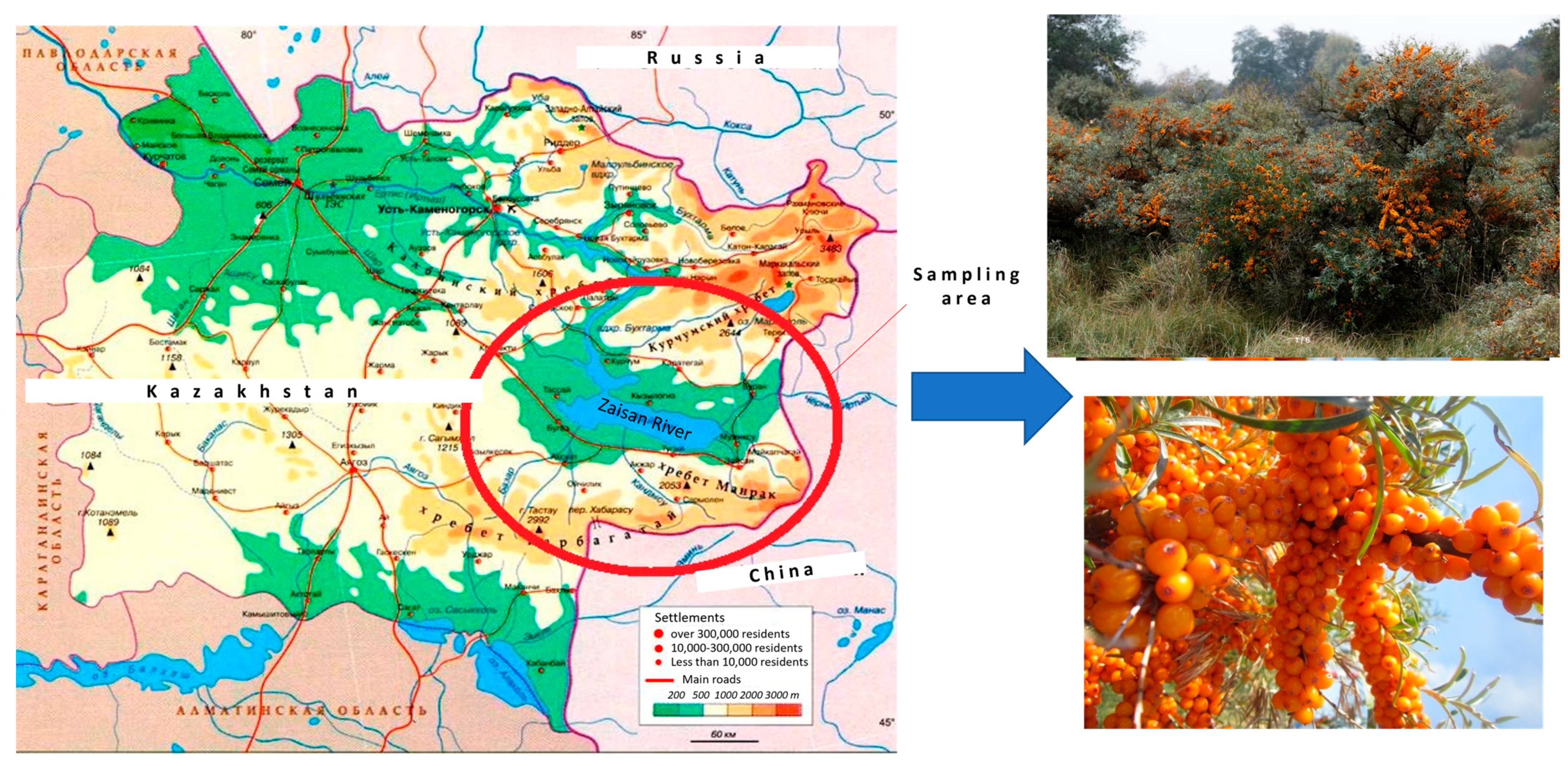

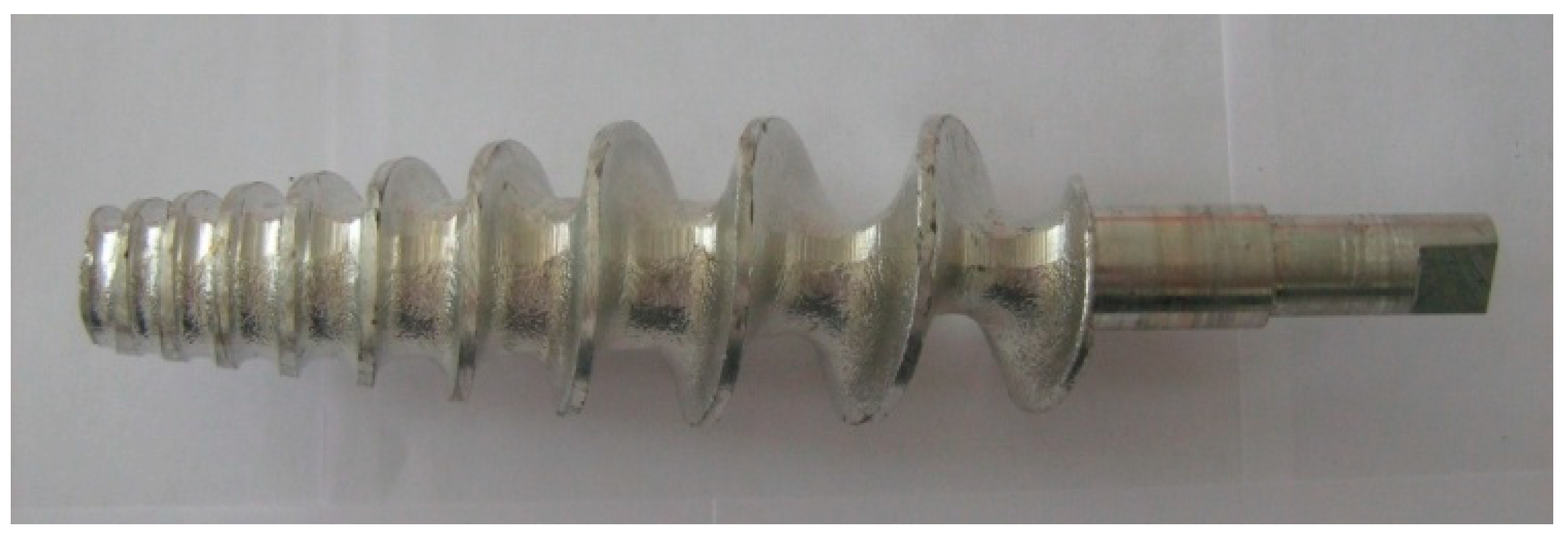
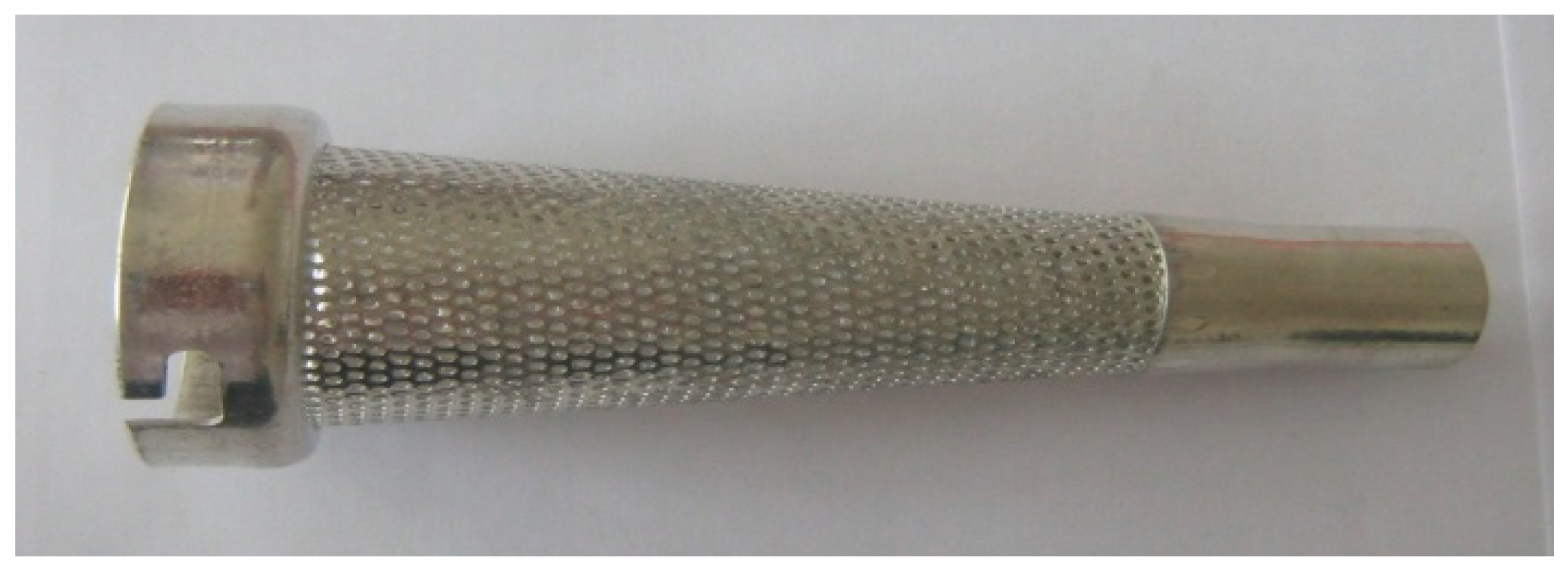



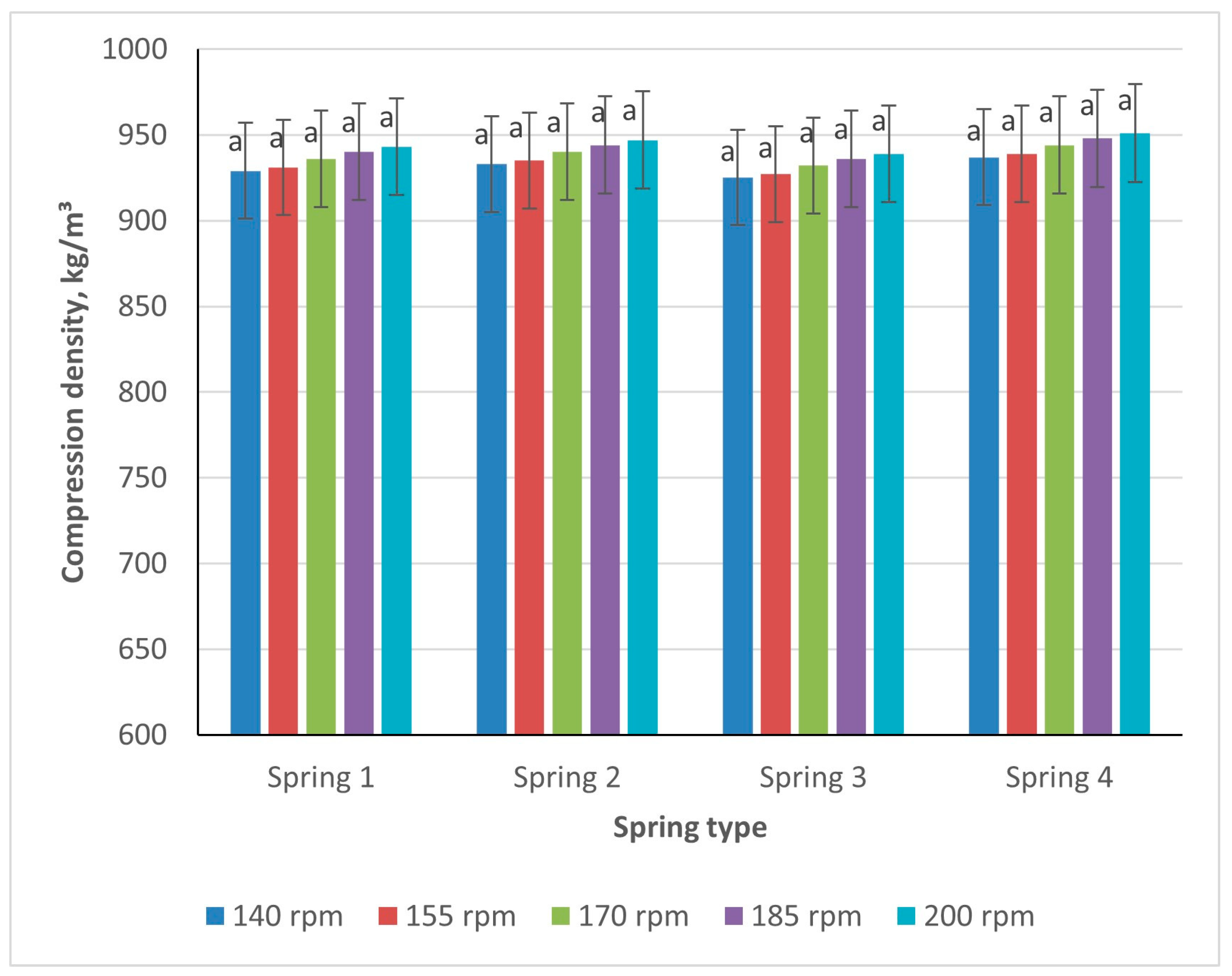
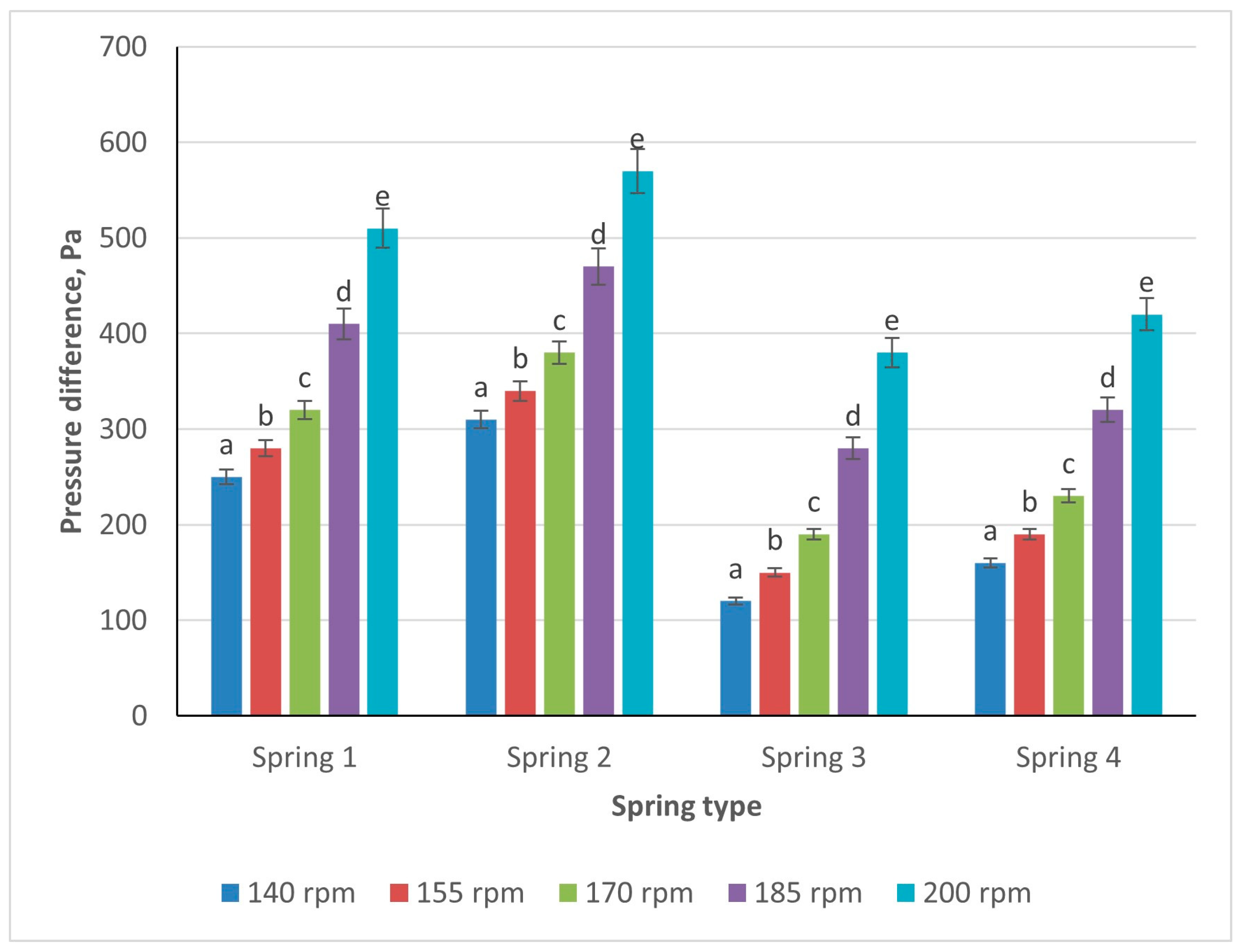

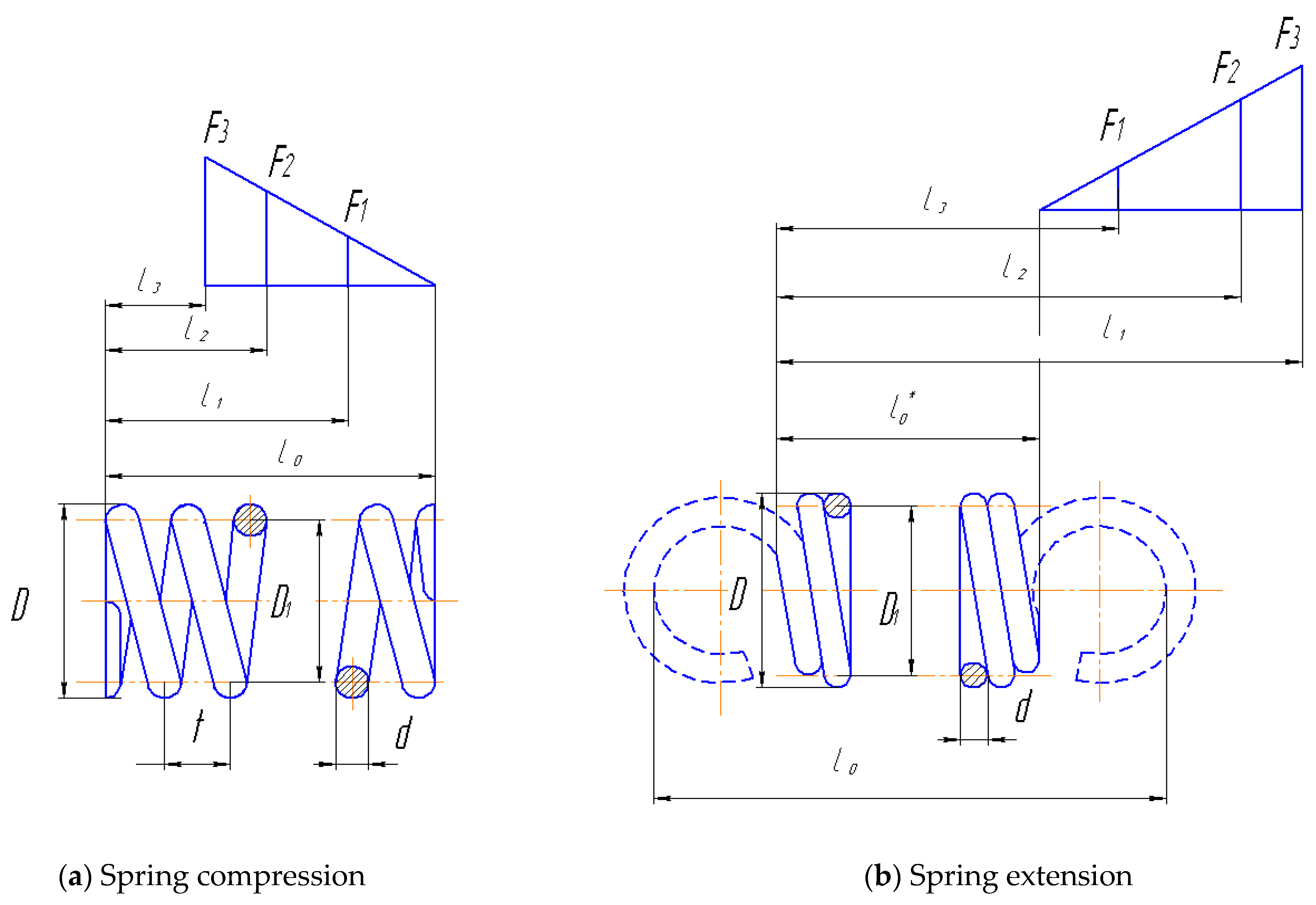
| Vitamin | Content, mg/L | Recommended Daily Intake, mg/day [22] |
|---|---|---|
| B1 | 0.33 ± 0.01 | 1.5 |
| B2 | 0.50 ± 0.01 | 1.8 |
| B6 | 0.76 ± 0.02 | 2.0 |
| C | 1540.54 ± 30.11 | 90 |
| B3 | 0.26 ± 0.00 | 20 |
| B9 | 8.60 ± 0.13 | 0.4 |
| DPPH (mg/g) | Total Phenolic Content (TPC, mg/g) | β-Carotene (mg/100 g) | |
|---|---|---|---|
| Methanol | 526 ± 6 | 117 ± 2 | 48.9 ± 0.8 |
| Water | 363 ± 5 | 133 ± 2 | |
Disclaimer/Publisher’s Note: The statements, opinions and data contained in all publications are solely those of the individual author(s) and contributor(s) and not of MDPI and/or the editor(s). MDPI and/or the editor(s) disclaim responsibility for any injury to people or property resulting from any ideas, methods, instructions or products referred to in the content. |
© 2025 by the authors. Licensee MDPI, Basel, Switzerland. This article is an open access article distributed under the terms and conditions of the Creative Commons Attribution (CC BY) license (https://creativecommons.org/licenses/by/4.0/).
Share and Cite
Kassenov, A.; Muratzhankyzy, N.; Mursalykova, M.; Kokayeva, G.; Tokaev, S. Effect of Pressure Regulating Mechanism on Screw Pressing Efficiency and Production Capacity in Sea Buckthorn (Hippophae rhamnoides) Juice Extraction. Appl. Sci. 2025, 15, 1130. https://doi.org/10.3390/app15031130
Kassenov A, Muratzhankyzy N, Mursalykova M, Kokayeva G, Tokaev S. Effect of Pressure Regulating Mechanism on Screw Pressing Efficiency and Production Capacity in Sea Buckthorn (Hippophae rhamnoides) Juice Extraction. Applied Sciences. 2025; 15(3):1130. https://doi.org/10.3390/app15031130
Chicago/Turabian StyleKassenov, Amirzhan, Nazerke Muratzhankyzy, Maigul Mursalykova, Gulnara Kokayeva, and Serik Tokaev. 2025. "Effect of Pressure Regulating Mechanism on Screw Pressing Efficiency and Production Capacity in Sea Buckthorn (Hippophae rhamnoides) Juice Extraction" Applied Sciences 15, no. 3: 1130. https://doi.org/10.3390/app15031130
APA StyleKassenov, A., Muratzhankyzy, N., Mursalykova, M., Kokayeva, G., & Tokaev, S. (2025). Effect of Pressure Regulating Mechanism on Screw Pressing Efficiency and Production Capacity in Sea Buckthorn (Hippophae rhamnoides) Juice Extraction. Applied Sciences, 15(3), 1130. https://doi.org/10.3390/app15031130







